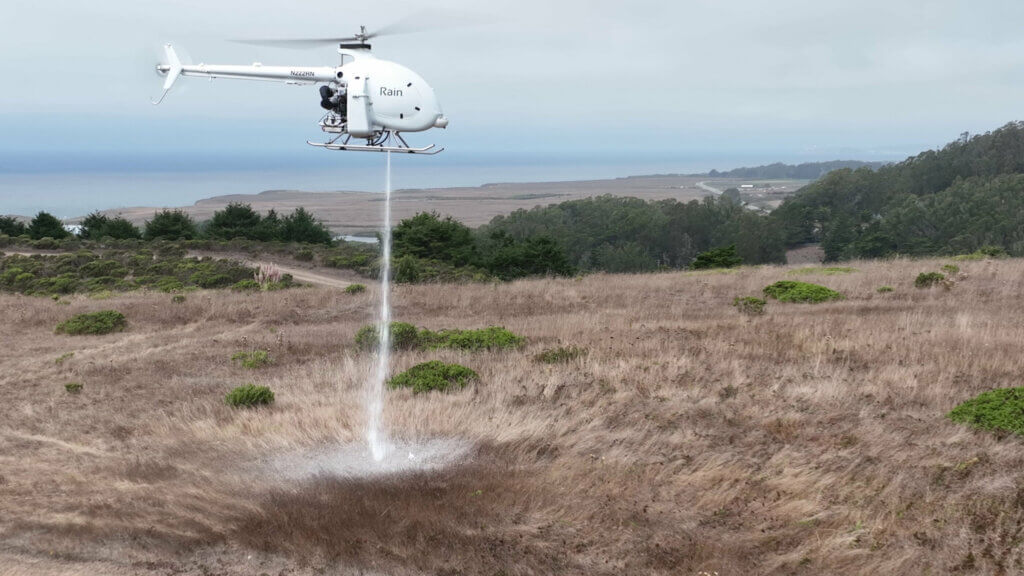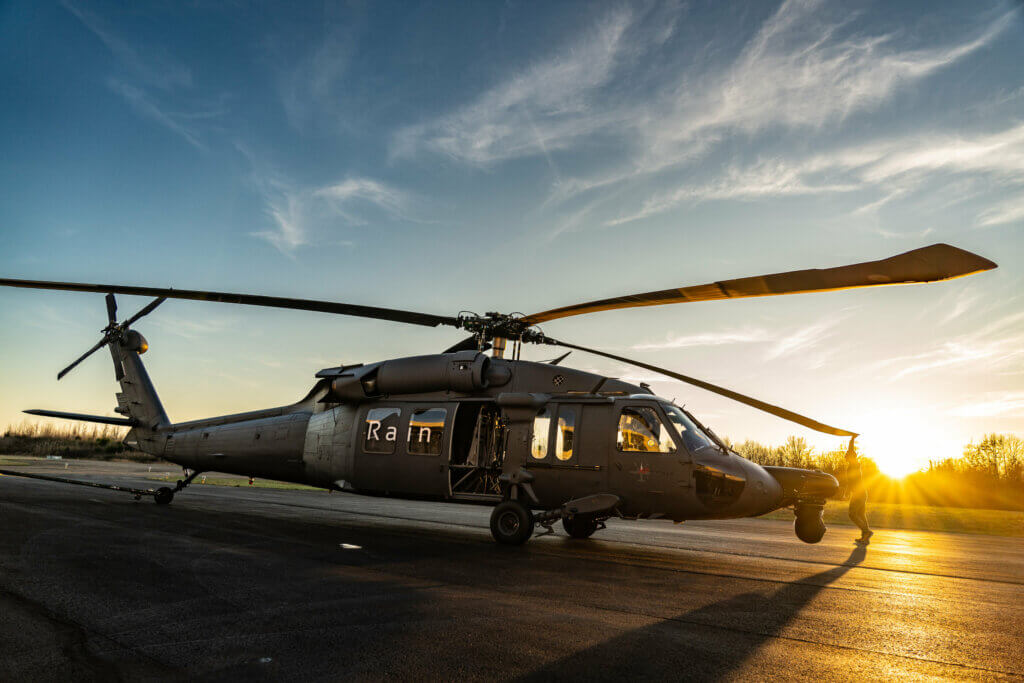The stage has been set, but it’s a show that no one wants to see: the upcoming 2023 wildfire season. Record-setting snow and rain in the western United States over the winter could lead to an elevated risk of disastrous fires, thanks to increased growth of underbrush. As the mountain snow melts, the potential for mudslides also rises, which knock down swathes of trees. This can have a two-fold effect. First, it allows winds to flow more freely to spread fires; and secondly, as the trees are dried by the summer heat, they provide abundant fuel for fires. California-based company Rain hopes to make a difference.

Rain co-founder and chief engineer Ephraim Nowak describes his company’s product as the fire sprinklers of the forest. “When fire sprinklers were introduced into buildings 50 years ago, the national rate of structure fires went down by 95 percent,” he told Vertical. “We’re looking at how we can do the same thing for wildfires.”
The approach that Rain is taking adds autonomous wildfire intelligence and suppression capabilities to uncrewed aircraft. “We’re not trying to compete with fire agencies; we’re providing tools to enable them to respond appropriately,” said Nowak. “The Rain system will remain under the operational control of the local fire agency having jurisdiction.”
Founded in 2019, Rain’s first foray into autonomous firefighting was a small drone that was essentially a proof of concept for this type of approach. After successful tests, Rain unveiled its autonomous firefighting capabilities on an unmanned airframe based on the single-seat Mosquito helicopter. “It has a 30-US gallon [115-liter] payload capacity and was designed to fly for over an hour with a 23-mile [37-kilometer] response radius,” Nowak said.
Rain intends to provide an autonomous, rapid wildfire containment system, tapping into the more than 1,000 fire detection cameras and sensors already in place across the western U.S. Rain-equipped aircraft would be automatically notified of a fire, respond to the location, then use thermal cameras and suppression algorithms to extinguish the ignition source. As Nowak stated, this would be in conjunction with notification of local resources.
“By adding fire intelligence to uncrewed aircraft stationed in high-risk areas, our system enables instant response combined with greater speed and effectiveness in containing incipient wildfires,” he said.
Rain is under no impression that a fleet of small UAVs can conquer the magnitude of fires seen in recent years, which the UN predicts will increase by about 50 percent globally by the end of the century. To that end, in April of this year, Rain applied its firefighting aircraft integration kit to a much larger airframe: a Sikorsky UH-60 Black Hawk.
Quickly becoming a favorite in the wildfire-fighting industry, the Black Hawk and its civilian Firehawk version are capable of carrying heavy loads in less-than-ideal conditions, with a battle-proven record. Rain demonstrated the potential of its system by using its firefighting kit to remotely dispatch a Black Hawk, located in Tennessee, to a simulated ignition source. The commands were transmitted from Rain’s headquarters, over 2,000 miles [3,200 kilometers] away in northern California. This successful flight test was made possible by avionics from Genesys Aerosystems with support from XP Services.

“By working with the emerging aircraft autonomy ecosystem, we’re able to focus on adding rapid wildfire containment technologies,” Nowak added. “Together, we’re equipping fire agencies with tools that meet the fire intensity that they’re seeing today. It’s all about keeping first responders and communities safe.”
According to Rain, an estimated 18 percent of global fossil fuel CO2 emissions are generated from wildfires, and between $148 and $348 billion of losses and resource expenditures are attributed to these disasters. Having lived through a massive firestorm in Okanagan Mountain Park, British Columbia, in 2003, wildfires have personally affected Nowak. He feels that Rain’s offering can have a significant impact in limiting their devastation.
“Through the simulations we have run just in California, the installation of 200 pre-positioned aircraft equipped with the Rain system would not just reduce, but eliminate large wildfires,” said Nowak. “We believe that if our system was fully implemented, we can eliminate all catastrophic wildfires in California and beyond by the year 2030. This is a global problem, and we feel we have a solution for it.”
Nowak recognizes that this lofty goal will take multi-agency acceptance, along with extensive testing and adaptation. Rain will be conducting further trials in cooperation with existing western U.S. agencies this coming year, while support for additional airframes commonly used by fire agencies are also on the horizon.









